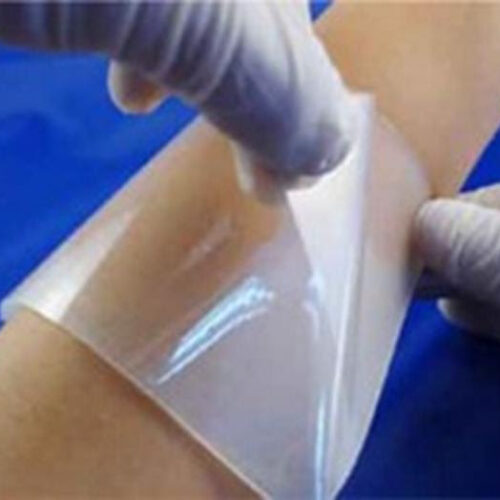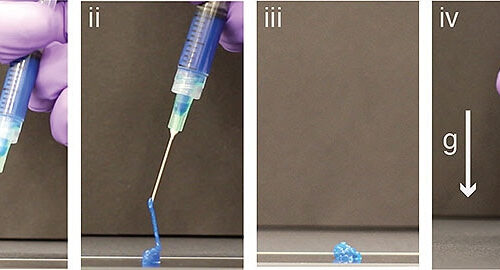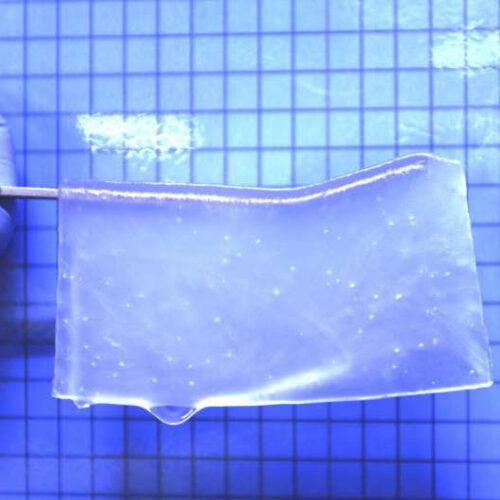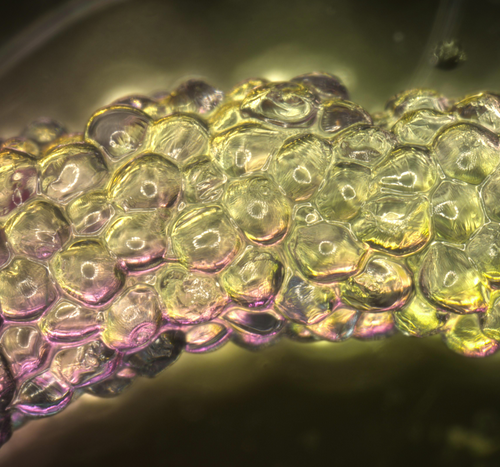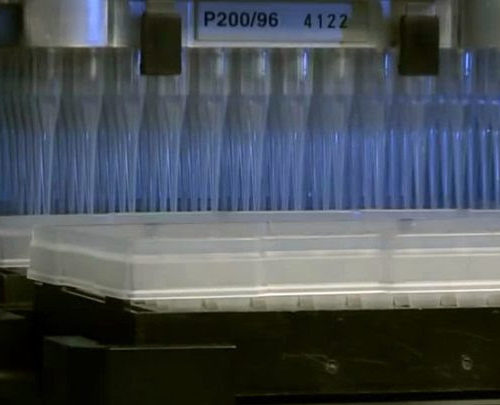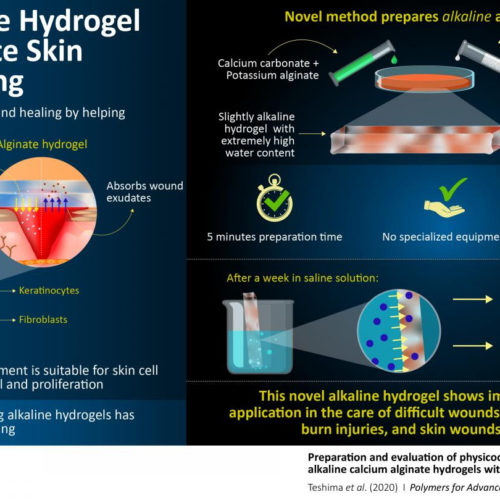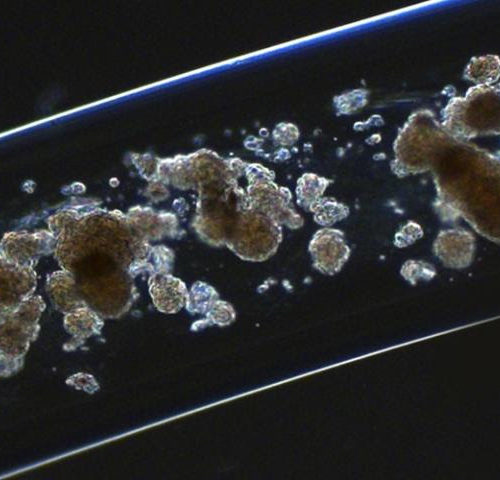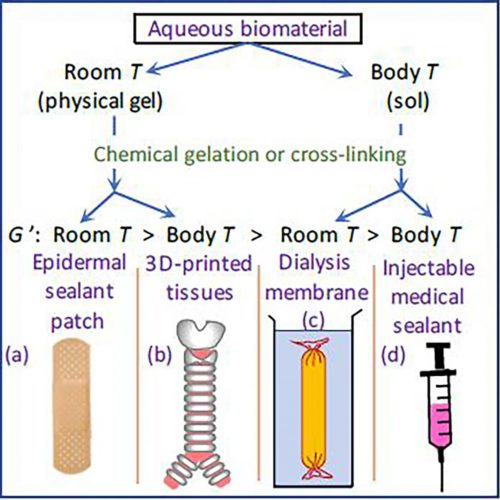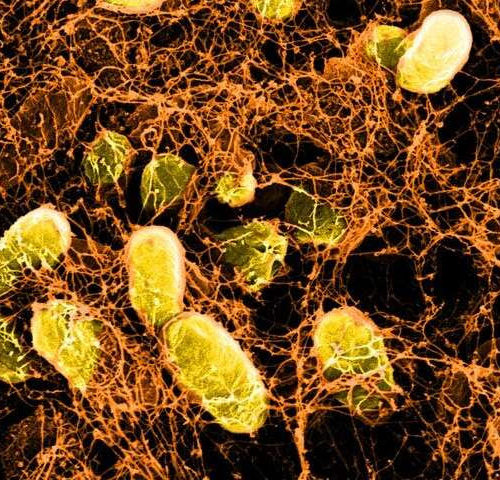By leveraging the power of oxygen, these gelatin patches can act as effective tissue adhesives that accelerate the healing of woundsPeer-Reviewed Publication INCHEON NATIONAL UNIVERSITY Hydrogels are a promising approach for treating wounds. CONVENTIONAL WOUND MANAGEMENT TECHNIQUES LIKE SUTURE AND STAPLING HAVE SEVERAL DRAWBACKS. TISSUE ADHESIVE PATCHES MADE FROM HYDROGELS COULD BE A GOOD ALTERNATIVE...
Tag: <span>hydrogels</span>
The Weird World of Hydrogels: How They’ll Change Healthcare
Lisa Marshall May 24, 2023 New hydrogels can flow easily through a needle yet maintain their gel form, releasing medicine slowly inside the body. Imagine a day when a simple injection prompts a broken bone to heal. When tiny, ingestible devices linger in the body, unnoticed, tracking our health or delivering life-saving medications. When brain and heart...
Healing the brain: Hydrogels enable neuronal tissue growth
by Hokkaido University Photograph of the semitransparent hydrogel used in this study. Credit: Satoshi Tanikawa et al, Scientific Reports, February 14, 2023. DOI: 10.1038/s41598-023-28870-z Synthetic hydrogels were shown to provide an effective scaffold for neuronal tissue growth in areas of brain damage, providing a possible approach for brain tissue reconstruction. While growing brains may sound like...
How to make hydrogels more injectable
MASSACHUSETTS INSTITUTE OF TECHNOLOGY IMAGE: MIT AND HARVARD RESEARCHERS HAVE DEVELOPED COMPUTATIONAL MODELS THAT CAN PREDICT THE PROPERTIES OF MATERIALS MADE FROM SQUISHY HYDROGEL BLOCKS. CREDIT: MIT CAMBRIDGE, MA – Gel-like materials that can be injected into the body hold great potential to heal injured tissues or manufacture entirely new tissues. Many researchers are working to develop...
Magnetic Field and Hydrogels Could Be Used to Grow New Cartilage
Instead of using synthetic materials, Penn Medicine study shows magnets could be used to arrange cells to grow new tissues. Using a magnetic field and hydrogels, a team of researchers in the Perelman School of Medicine at the University of Pennsylvania have demonstrated a new possible way to rebuild complex body tissues, which could result in more...
Magnetic field and hydrogels could be used to grow new cartilage
by Perelman School of Medicine at the University of Pennsylvania Using a magnetic field and hydrogels, a team of researchers in the Perelman School of Medicine at the University of Pennsylvania have demonstrated a new possible way to rebuild complex body tissues, which could result in more lasting fixes to common injuries, such as cartilage degeneration. This research was published...
Novel alkaline hydrogel advances skin wound care
Scientists, including an undergraduate student, develop a novel method to produce an alkaline hydrogel that could be applied to healing wounds better TOKYO UNIVERSITY OF SCIENCE A NEW METHOD THAT REQUIRES NO SPECIALIZED EQUIPMENT AND CAN BE PERFORMED AT ROOM TEMPERATURE TO PRODUCE AN ALKALINE HYDROGEL IN FIVE MINUTES, ALLOWING ITS EASY IMPLEMENTATION IN ANY...
Diabetic mice improve with retrievable millimeter-thick cell-laden hydrogel fiber
INSTITUTE OF INDUSTRIAL SCIENCE, THE UNIVERSITY OF TOKYO CREDIT: INSTITUTE OF INDUSTRIAL SCIENCE, THE UNIVERSITY OF TOKYO Tokyo, Japan – Type 1 diabetes mellitus (T1DM) results from an irreversible autoimmune destruction of insulin-producing pancreatic β-cells requiring life-long substitution of insulin. In a new study, researchers at the Institute of Industrial Science, The University of Tokyo...
Adjusting processing temperature results in better hydrogels for biomedical applications
Using different temperatures creates sturdier hydrogels for tissue repair, surgical sealants and 3D printing AMERICAN INSTITUTE OF PHYSICS WASHINGTON, March 24, 2020 — Biohydrogels — biomaterials composed of polymer chains dispersed in water — have been studied closely by researchers for their potential use in biomedical applications, such as in tissue repair, as surgical sealants,...
Using the immune system, hydrogels, and bacteria to treat and prevent intestinal diseases
by Lindsay Brownell Each one of us carries about 38 trillion bacteria around with us in our gut every day—if you wanted to count them all, it would take you more than a million years. How can such a veritable zoo of microbes reside peacefully in our guts without triggering our immune systems to attack...

